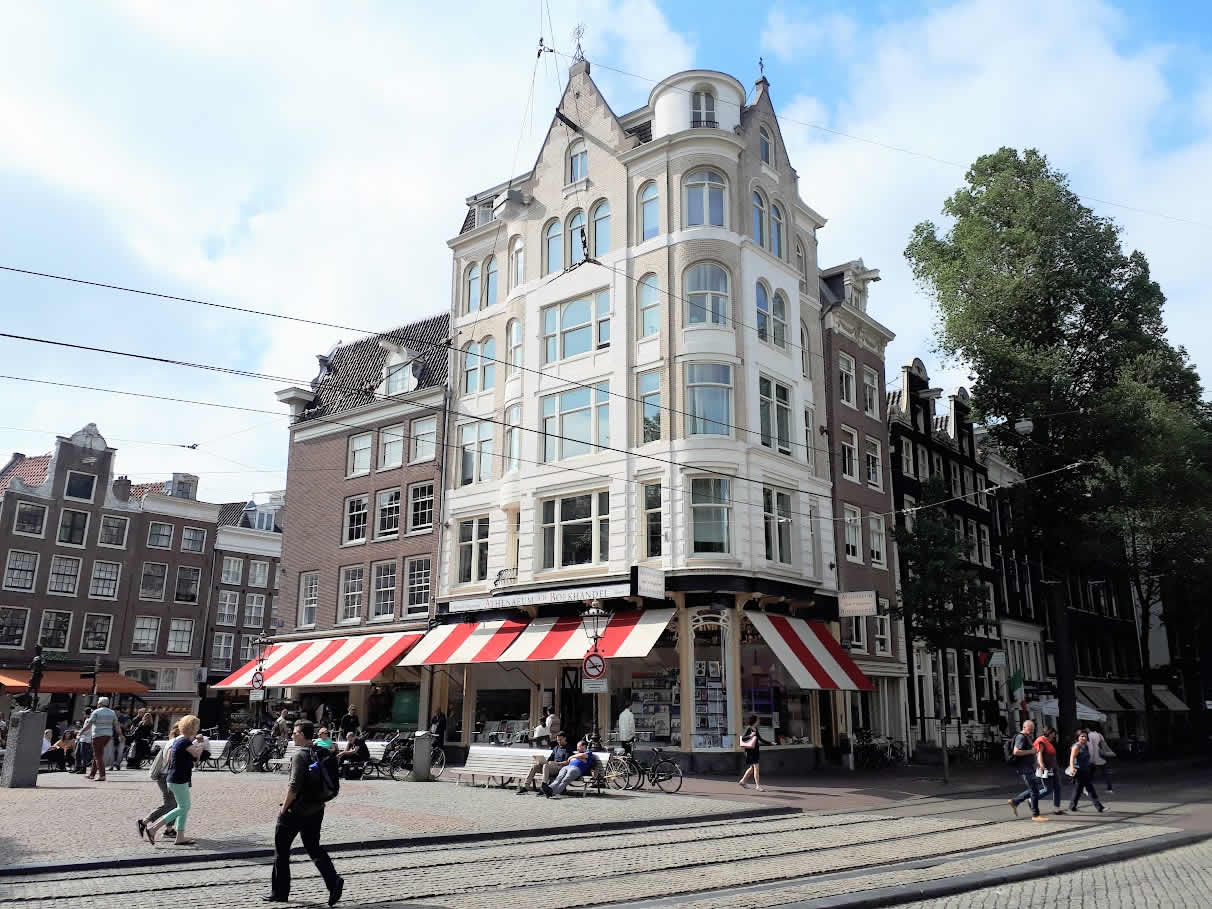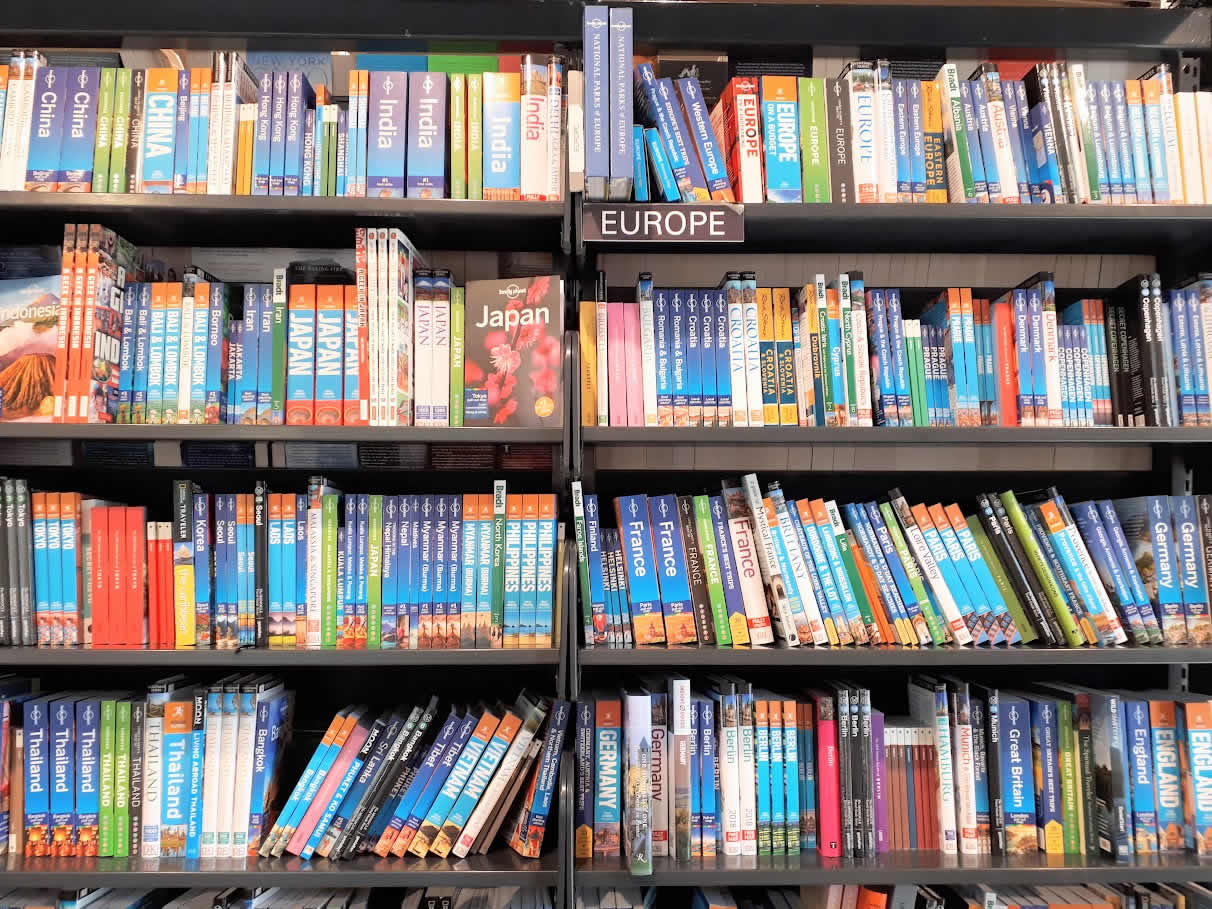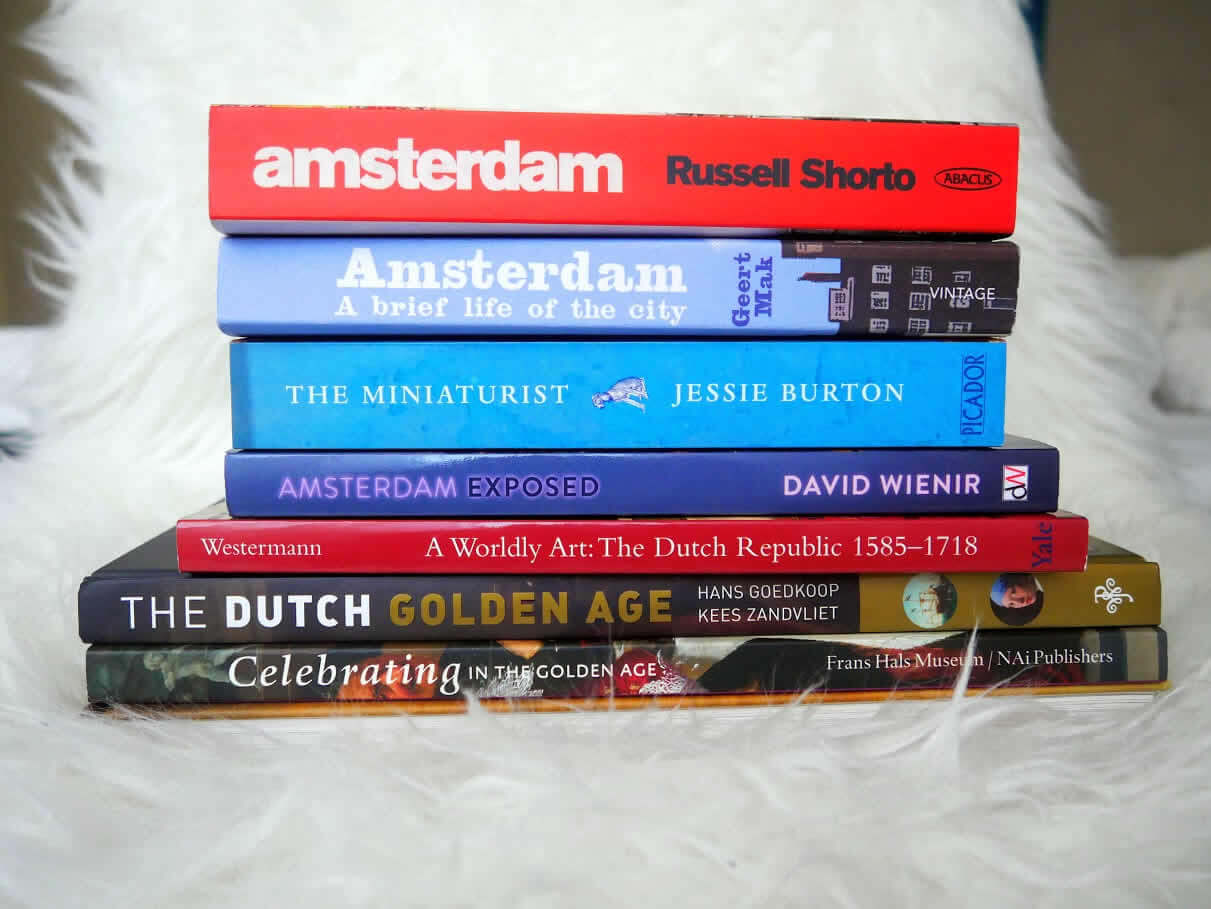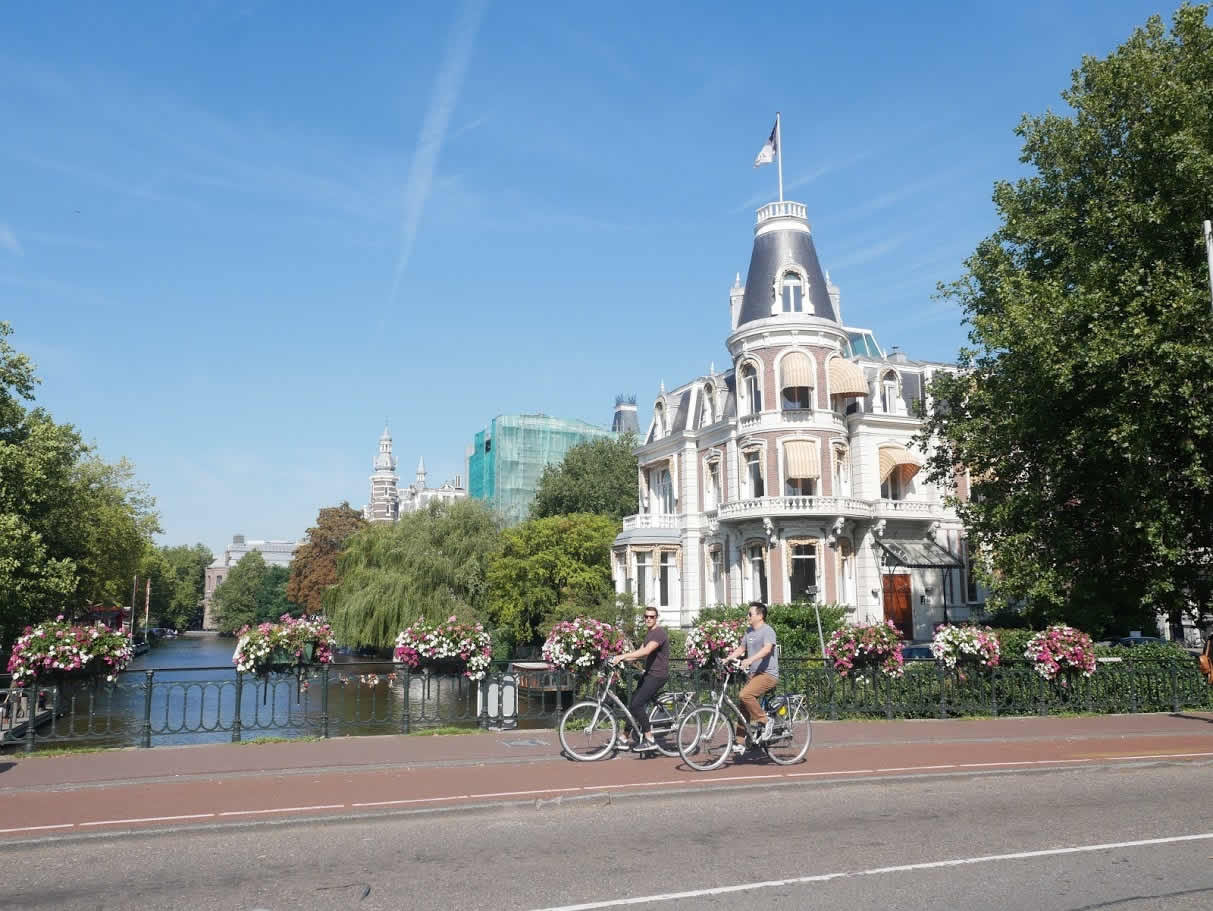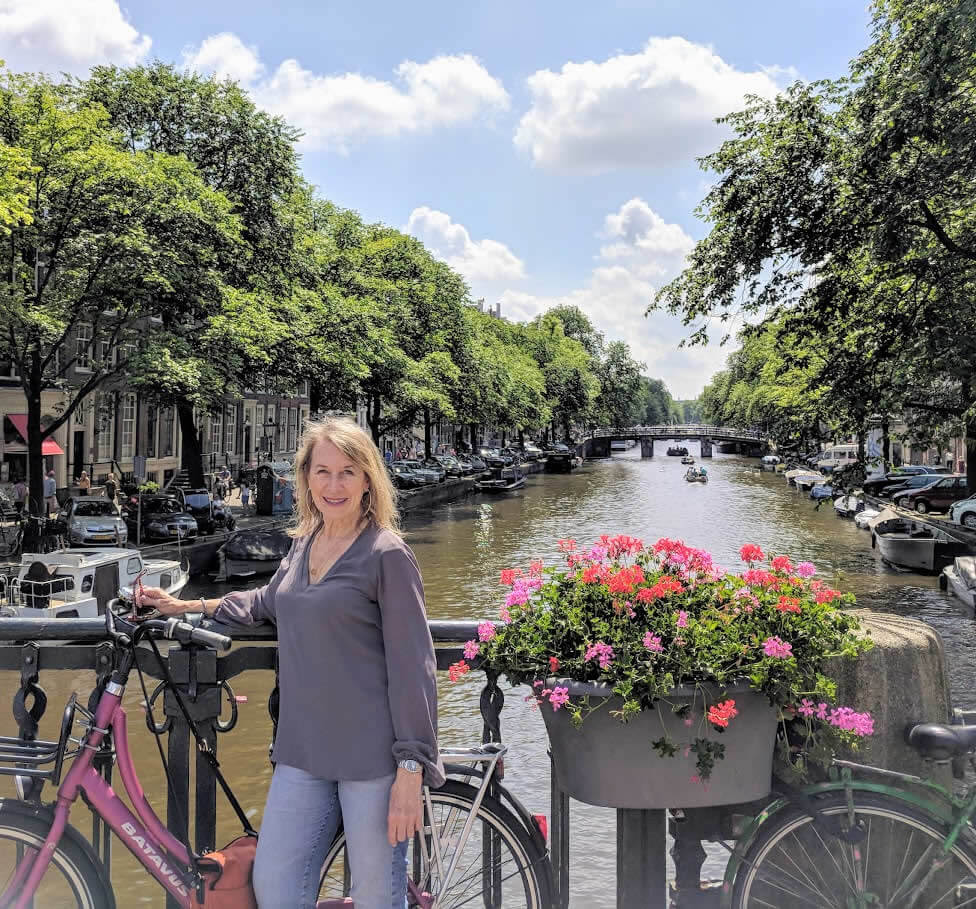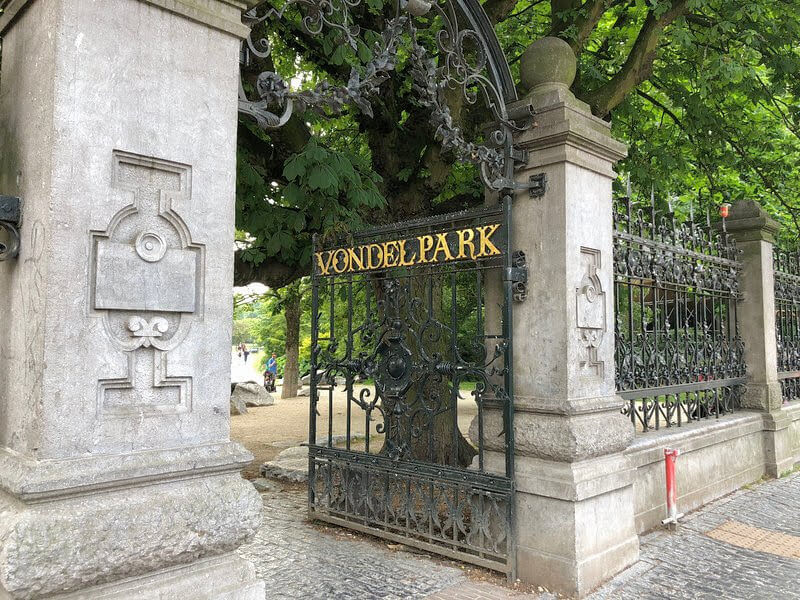With its picturesque canals and canal houses, Amsterdam was a source of inspiration to numerous writers. And by being one of the most important printing centres during history, the city definitely has a lot to offer to book lovers. So, here is a Literary Guide to Amsterdam with book stores, walking tour and places to see during your visit to Amsterdam.
Literary Guide to Amsterdam
# – Book stores
There are so many great book stores in Amsterdam, it’s hard to choose only a few to mention here. Majority of really nice ones are around Spui Square. There are many specialised book stores there with books and magazines about art, travel, history etc.
My favourite book stores in that area are:
- American Book Centre (address: Spui 12) – The biggest European book store with books in English
- Waterstones (address: Kalverstraat 152) – Beside a large range of books, it also has a lot of cute notebooks, travel diaries etc.
- New English Bookstore (address: Kalverstraat 223) – A place where you can find many nice and quite cheap books (perfect for travel)
*TIP: A book about Amsterdam could be a great souvenir from your trip to this city. You can buy it in one of these book stores. Or you can order it on line and read it before your trip to Amsterdam.
# – Books about Amsterdam
There are so many great books about Amsterdam or with a story happening in it. Reading some of them could be great preparation for your trip. The one which was recently published is ‘Amsterdam exposed‘ and it’s a great read if you’re interested in story behind the Red Light District. However, here are my 5 favourite books. I would recommend anyone to read before travelling to Amsterdam.
- Anne Frank: The Diary of a Young Girl
- Russell Shorto: Amsterdam: A History of the World’s Most Liberal City
- Jessie Burton: The Miniaturist
- David Liss: The Coffee Trader
- Geert Mak: Amsterdam: A Brief Life of the City
I still believe, in spite of everything, that people are truly good at heart.
(Anne Frank: The diary of a young girl)
# – Amsterdam Literary Landmarks Walking Tour
Probably the best way to learn about the literary history of Amsterdam is by taking a walking tour dedicated to it. Mary Sobiechowski is an American who is organising ‘Amsterdam Literary Landmarks Walking Tours’ on which she will show you some special libraries, book café and will tell you who were the most important writers living in Amsterdam. She was very kind and answered a few questions for Culture Tourist about the literary history of the city.
#1 – Why have you started organising walking tours dedicated to Amsterdam’s literary history?
Over the years, I travelled extensively as a CIO, Chief Information Officer for a global advertising and media company and would extend my stay in cities I visited to learn about the city and its culture. I am a serious book lover, thus made a point always to visit the main library and take walking or biking tours, searching for book markets and the places I have read about in novels. When I moved to Amsterdam last year, I saw there were many historical tours but not a single literary tour. This surprised me as Amsterdam has a rich history of publishing, has many amazing libraries and is the setting for some really wonderful books. Thus the idea was born. Did you know over 70 streets in Amsterdam are named for Dutch writers?
#2 – ‘What’s so interesting in ‘Amsterdam’s literary and publishing history? Why was Amsterdam so important as a publishing and printing centre during the 17th Century?
Oh my, there are so many compelling reasons! In the 17th century, Amsterdam was the centre of the worldwide empire of trade. More books were printed in the Netherlands than in all other European countries put together. Multiple factors; political, social, demographic, economic, religious, cultural and intellectual – equally provide the key to an understanding of the remarkable success the Dutch Republic had in the sphere of publishing, printing, and bookselling. Here are just a few reasons why:
- The book trade profited greatly from the flourishing industrial and mercantile climate. The good infrastructure of roads and waterways made transport quick, safe and reliable.
- The government was not able to exercise the same degree of control over the book trade as existed in centralised monarchies like France or England. Also, in other countries, the church, in cooperation with the state, banned the publications of texts that were deemed blasphemous or against the prevailing ruler. Not so in the Netherlands.
- The extensive Dutch foreign trade network, with the many trading and shipping companies imported news from all over the globe, where it was converted into print.
- Pirated editions of foreign bestsellers were produced in large quantities in the Dutch Republic for export. Dutch printers were constantly on the lookout for interesting publications that they could copy.
- Another driving force was the influx of large numbers of immigrants, many of them religious and economic refugees, brought with them knowledge and experience in trade and industry and, equally important, a zeal to rebuild their lives.
- Literacy was on the rise, particularly among the expanding middle classes in the cities, thanks to the availability of various forms of primary education. Around 1650, about half of the young adult population, male and female, in the cities was able to read and write. Education stimulated cultural and intellectual life.
#3 – What are some of the places anyone interested in ‘Amsterdam’s literary history should visit when in Amsterdam?
Obviously, the Anne Frank House, although this is not on my tour, for numerous logistical reasons. The Ritman Library, in the House of the Heads is truly a gem, not only for its library of the most beautiful books and artwork but to see the inside of one of the most prestigious architectural landmarks in Amsterdam. And for insight into modern Dutch publishing and writers from around the world, one must visit the Ambassade Hotel. The Oudemanhuispoort is a daily book market, originated in 1879 and continues to this day.
#4 – Who are some of the most important writers and poets that lived in Amsterdam?
Without a doubt, Baruch Spinoza, is the most important writer and philosopher. He is perhaps, more important than Rembrandt and Vondel. The list of eminences who were influenced strongly by Spinoza is as impressive as it is long: Bayle, Hume, Voltaire, Diderot, Rousseau, Goethe, Kant, Hegel, Wordsworth, Coleridge and Shelley, Marx, Nietzsche, Freud, and Multatuli.
Albert Einstein as well, wrote to a New York rabbi in 1929, “I believe in ‘Spinoza’s God (…) who reveals Himself in the lawful harmony of the world, not in a God Who concerns Himself with the fate and the doings of mankind”.
#5 – ‘What’s your favourite book or poem inspired by Amsterdam?
The Signature of All Things by Elizabeth Gilbert is inspired by the real female botanist who worked so hard to make the Hortus Botanicus the world-class garden and keeper of ‘Darwin’s letters. It is inspiring on so many levels, from botany and first travel on the East India trading ships, culture and of course, love.
However, here is also a list of some of my favourite books about Amsterdam.
#6 – How can people book one of your literary walking tours?
They either go through the LINK here or message me via my Facebook Page.
Some other places to see…
# – Vondelpark
The biggest park in Amsterdam, Vondelpark was named after Joost van den Vondel. He was a poet and a playwright and with a reason called the ”Dutch Shakespeare”. He lived during the 17th century and is considered to be one of the most important Dutch poets and writers. You can see his statue in Vondelpark and his grave in Nieuwe Kerk on the Dam Square in Amsterdam.
Is it fate that I will fall, robbed of honour and dignity,
Then let me fall, if I were to fall, with this crown upon my head
(Vondel’s Lucifer)
# – Anne Frank House
The saddest story that happened in Amsterdam and was described in a book is definitely the one of Anne Frank. ‘I’ve read it a few times, and each time I was stunned with a different part of it. Reading a book before visiting Anne Frank House, a place where she was hiding for two years with her family is a must.
You can get a copy of Anne Frank’s Diary here.
*TIP: If ‘you’re planning to visit Anne Frank House while in Amsterdam, buy your tickets with a specific time on them in advance online. Tickets are selling out quickly so you should do that at least a month and a half before your visit. You can buy your ticket on this link.
# Rijksmuseum Library
Probably my favourite library in Amsterdam is the one in the Rijksmuseum. It’s the largest art library in the Netherlands. It’s interior was designed when the museum was built in 1885. You can see it during your visit to the museum (from the gallery on the second floor). However, the library is open to the public, so you can also get in there and read some art books there, as well.
You can get your Rijksmuseum entrance ticket on a link here.
# OBA
OBA, a public library close to Amsterdam Centraal train station, is a piece of art itself. A modern 7-stores high building is home to wonderful books from all around the world. There is a restaurant with a great view of a city on its top floor. So, it’s definitely a place that shouldn’t be missed by any book lover visiting Amsterdam.
Many thanks to Mary for sharing some of her insights about literary heritage of Amsterdam. If you’ll be travelling to Amsterdam soon, be sure to check out her tour.
*This post contains some affiliate links.

